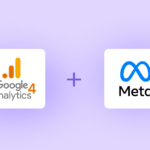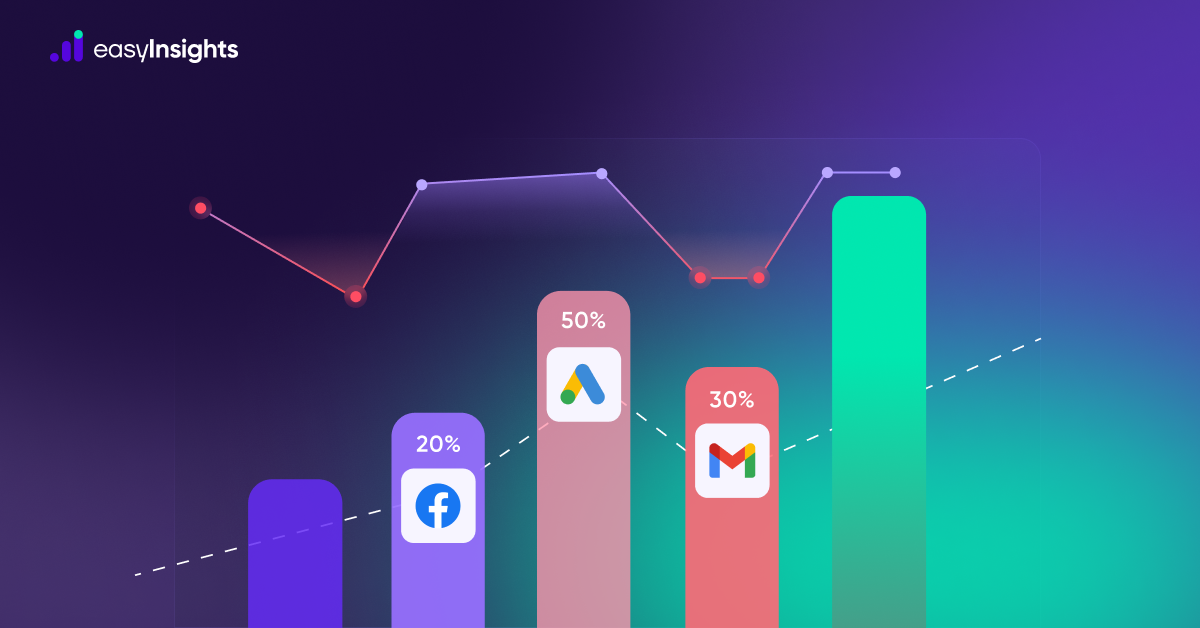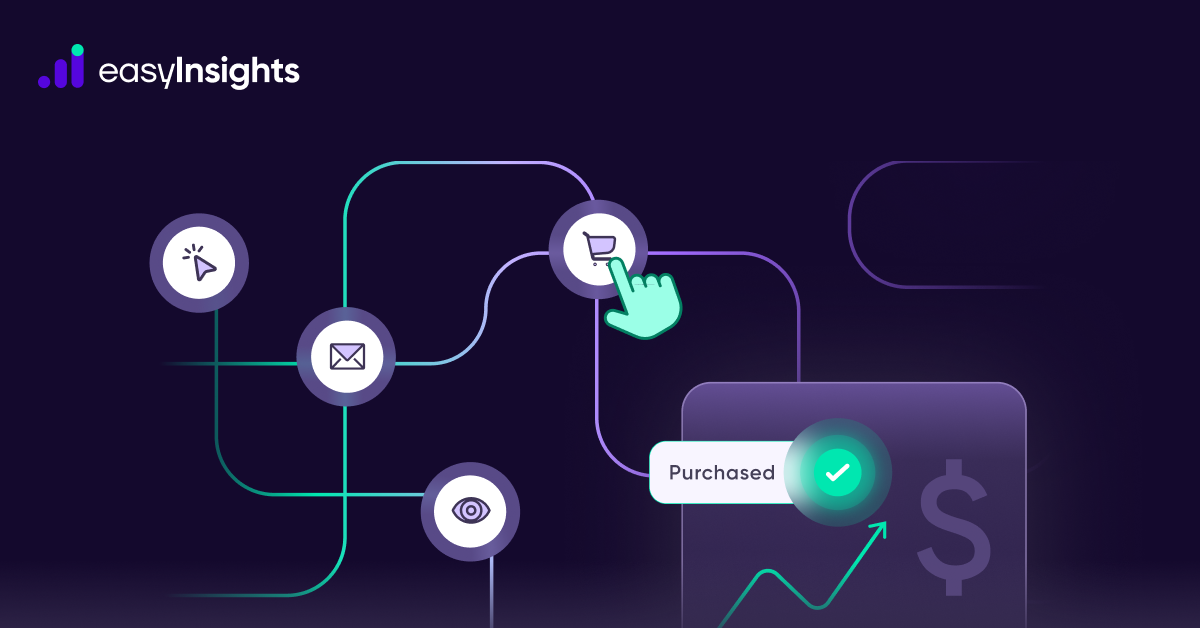
When a user decides to purchase something, they typically interact with a brand and its product through multiple devices. For example, users may have seen an advertisement or a review, visited the brand’s website, or explored other available channels. If marketers understand the impact of different marketing touchpoints on conversions, users can allocate their budget more effectively—investing in high-performing touchpoints and reducing spend on those that have little to no effect. What we are talking about here, is the multi-touch attribution model.
Because choosing the right marketing model is essential for understanding customer behavior and improving conversion rates. Multi-touch attribution (MTA) stands out as the best approach for Shopify stores because it distributes credit across multiple touchpoints, providing a clearer picture of how different marketing efforts contribute to sales. This allows brands to make data-driven decisions and allocate budgets more effectively.
In this guide, we’ll dive into how multi-touch attribution can increase your Shopify sales by accurately tracking customer journeys, optimizing ad spend, and improving ROAS with the best attribution models and strategies
Jump ahead to:
What is Multi-touch Attribution?
Multi-touch attribution is all about figuring out how much credit each step in a customer’s journey deserves for leading to a sale or action, like signing up for a free trial. The idea is to understand which marketing channels or ad campaigns (including creatives and audience types) helped the most, so you can use your ad budget more strategically, and attract more customers.
Imagine a customer sees your Facebook ad, clicks on a Google search ad, and then finally signs up after receiving an email ad. Should the Facebook ad that started the journey get more credit, or does the Google search ad deserve it or the Google email ad? Multi-touch attribution helps answer questions like this by looking at all the steps, not just the first or last one.
Types of MTA Models
In a customer’s journey, multiple touchpoints—including different devices, browsers, and marketing campaigns—contribute to a conversion. To accurately measure which channels play the most significant role, Shopify merchants can use different multi-touch attribution models to assign credit accordingly. Here are some key models:
1. Linear Multi-Touch Attribution Model
The linear attribution model evenly distributes credit across all touchpoints in the customer journey. Every interaction is treated as equally important, regardless of its actual influence on the conversion.
Example: If a customer interacts with an Instagram ad, an influencer’s recommendation, and a LinkedIn ad before making a purchase, each of these three touchpoints would receive equal credit for the conversion.
This model is simple and ensures all marketing efforts are acknowledged, but it doesn’t differentiate between highly influential and minor touchpoints.
2. U-Shaped Attribution Model
The U-shaped attribution model assigns the most credit to the first and last interactions, recognizing their significance in attracting and finalizing a purchase. The remaining touchpoints in the middle get less credit. This model is useful for brands that value both brand awareness (first touch) and conversion triggers (last touch).
Example: A customer’s journey includes Facebook Ads, Instagram influencer marketing, email, Reddit discussions, Google organic search, and a referral site before making a purchase. This model is ideal for brands that want to highlight how customers discover their brand and what ultimately leads them to convert.
3. Time Decay Attribution Model
The time decay attribution model gives more credit to touchpoints that occur closer to the conversion, assuming that later interactions are more influential in driving sales. This model works well for longer sales cycles where customers take time to make decisions.
Example: If a customer interacts with multiple ads, blogs, and emails over a few weeks, the last few interactions (such as a remarketing ad or an email with a discount) receive the highest credit, while earlier touchpoints receive progressively less.
This model is particularly helpful for brands that run long-term nurturing campaigns, as it helps measure how soon a customer converts after being exposed to different marketing efforts.
Why is Multi-Touch Attribution Important in E-Commerce?
For Shopify store owners and marketers, knowing which marketing channels drive sales is essential for:
- Better budget allocation – Avoid wasting money on ads that do not contribute to conversions.
- Optimized marketing campaigns – Understand how different channels work together to improve performance.
- Improved return on ad spend (ROAS) – Allocate budget effectively based on accurate data.
Without MTA, brands often overvalue the last touchpoint, such as the final ad clicked, and ignore earlier interactions like a blog post or a social media ad. This can lead to misplaced ad spend and missed opportunities to nurture customers throughout their journey.
Why Multi-Touch Attribution Is Better Than Single-Touch Attribution for Shopify Stores ?
In today’s E-Commerce markets, relying on single-touch attribution can lead to misleading insights and inefficient ad spending. Brands running Meta campaigns, Google Ads, and influencer partnerships need a deeper understanding of how different touchpoints contribute to conversions. Here’s why multi-touch attribution is the better choice:
First, it provides a holistic view of the customer journey. A shopper might first see a Meta campaign, later click on a Google ad, and finally convert through an email. Single-touch attribution would give credit to only one of these touchpoints, while multi-touch attribution ensures all contributing interactions are accounted for.
Second, it improves ROAS optimization. By analyzing multiple touchpoints, brands can identify which channels work best at different stages of the funnel. This allows for smarter budget allocation, ensuring ad spend is directed toward the most effective campaigns.
Third, it aligns with modern consumer behavior. Shoppers rarely make a purchase after a single interaction. They explore, compare, and engage with multiple ads before deciding. Multi-touch attribution captures this complexity, helping brands refine their marketing strategies for better performance.
By adopting multi-touch attribution, brands can make data-driven decisions, enhance personalization, and maximize the efficiency of their ad campaigns leading to stronger conversions and sustained growth.
Why Brands should opt for MTA to Optimise Marketing for their Shopify Stores?
Users engage with multiple touchpoints before making a purchase decision. Relying solely on single-touch attribution models, such as first-touch or last-touch, leads to an incomplete understanding of the customer journey, potentially misguiding marketing strategies. Multi-touch attribution offers a more nuanced approach, assigning appropriate credit to each interaction. Here’s why integrating MTA into your campaigns is essential:
1. Accurate Performance Analysis
Single-touch models often misrepresent the effectiveness of marketing channels by attributing the entire conversion credit to just one touchpoint. MTA provides a detailed view of how each touchpoint contributes to conversions, enabling marketers to assess channel performance more precisely.
2. Optimized Resource Allocation
Without a comprehensive attribution model, there’s a risk of over-investing in channels that appear to perform well under single-touch models but may not be as effective in driving conversions. MTA identifies the actual contribution of each channel, allowing marketers to allocate budgets more effectively and enhance ROI.
3. Enhanced Campaign Effectiveness
Understanding the role of each touchpoint enables marketers to refine their strategies, tailoring content and timing to better engage potential customers. This leads to more personalized marketing efforts, improved customer experiences, and higher conversion rates.
4. Data-Driven Decision Making
MTA offers granular insights into customer interactions, empowering marketers to make informed decisions based on comprehensive data. This approach reduces reliance on assumptions and enhances the ability to adapt strategies in real-time to meet evolving consumer behaviors.
5. Alignment with Complex Customer Journeys
Today’s consumers interact with brands across various channels and devices. MTA captures these multifaceted journeys, providing a holistic view that aligns marketing efforts with actual consumer behavior, leading to more effective and cohesive campaigns.
By adopting multi-touch attribution, marketers can move beyond the limitations of single-touch models, gaining a comprehensive understanding of their campaigns’ effectiveness. This leads to better resource allocation, improved performance analysis, and ultimately, more successful marketing outcomes.
Additional Reading: How To Set Up Conversion Tracking in Google Ads for Shopify: A Complete Overview
Implementing Multi-Touch Attribution for Shopify with EasyInsights
To maximise your ROAS and gain deeper insights into your marketing performance, implementing multi-touch attribution on Shopify is crucial. EasyInsights provides an effective solution to track customer journeys across multiple touchpoints, helping you optimize marketing efforts. Key Aspects of Multi-Touch Attribution:
- Channel Attribution – Identify which channels (Google Ads, Meta, Email, Organic, etc.) contribute most to conversions.
- Asset-Level Attribution – Determine which creatives, or landing pages drive the highest engagement.
- Attribution Models – Use models like Linear, Time Decay, or Data-Driven attribution to distribute credit accurately.
- ROAS Optimization – Allocate budgets efficiently based on performance insights, reducing wasted ad spend.
Implementing multi-touch attribution with EasyInsights on Shopify enables data-driven marketing decisions, ensuring every dollar spent contributes to revenue growth. With the EasyInsights Pixel, you can accurately attribute conversions across channels, assets, and touchpoints, you can optimize campaigns, improve ROAS, and scale your E-Commerce brands profitably.
Sign up for a demo today to see EasyInsights in action.








